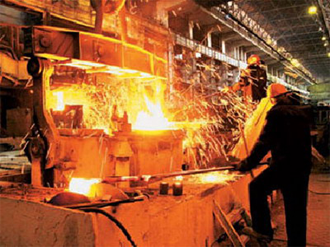News
Classification and application of stainless steel

Compared with other metals, stainless steel has appeared relatively recently. A little over a century ago, it was discovered by Harry Brearly. Experimenting with alloys, he determined that steel with a high content of Cr is resistant to acid corrosion. Today, stainless steel is mainly alloyed with Cr and Ni in an amount of 12-20%. In a smaller amount, titanium , niobium, molybdenum, manganese and other metals can be used. In general, the corrosion resistance is achieved by the formation of insoluble oxides of nickel, chromium .
The classification of stainless steel is made by chemical composition. The stainless steel can be chromic, chromium-nickel , chromomanganese-nickel. The first include alloys ferritic, semi-ferritic, martensitic. The second and third alloys are austenitic-ferrite, austenitic-martensitic, austenitic-carbide, austenitic alloys.
Austenitic steel is manufactured with the addition of niobium and titanium . After welding, the steel is usually subjected to heat treatment. If nickel and iron are added, the austenite structure is stabilized. The alloy is transformed into a weakly magnetic material. Martensitic-ferritic and martensitic alloys are highly resistant to moisture, weak acids and salts. The ferritic steel is well resisted by an aggressive oxidizing environment.
Austenitic steels differ in plasticity, resistance to corrosion. Steel grade 300 series are widely used in engineering as a structural material. Austenitic-ferritic steel contains a smaller percentage of nickel , has good weldability. It is widely used in aviation, machine building, shipbuilding. It includes the brands 08Х18Г8Н2Т, 08Х22Н6Т, 08Х21Н6М2Т. The austenitic-martensitic steel includes the brands 08Х17Н5М3, 07Х16Н6. They have high processability and strength.
Nickel , iron-nickel- based steels include grades 04ХН40МТДТЮ, chromium -nickel ХН60МБ, nickel-molybdenum Н70МФ. There are also chromium-nickel grades ХН58 В. These steels have found wide application in the chemical industry. They successfully resist the action of hydrochloric and sulfuric acid.
The modern world can hardly do without stainless alloys. In 2010, the volume of stainless steel production reached about 25 million tons. Applied it in almost all industrial sectors. Stainless steel produces dishes and equipment, hydraulic press and cutting tools.
Our consultant will save your time!

Alexander
sales department
+38 (063) 073-44-92
